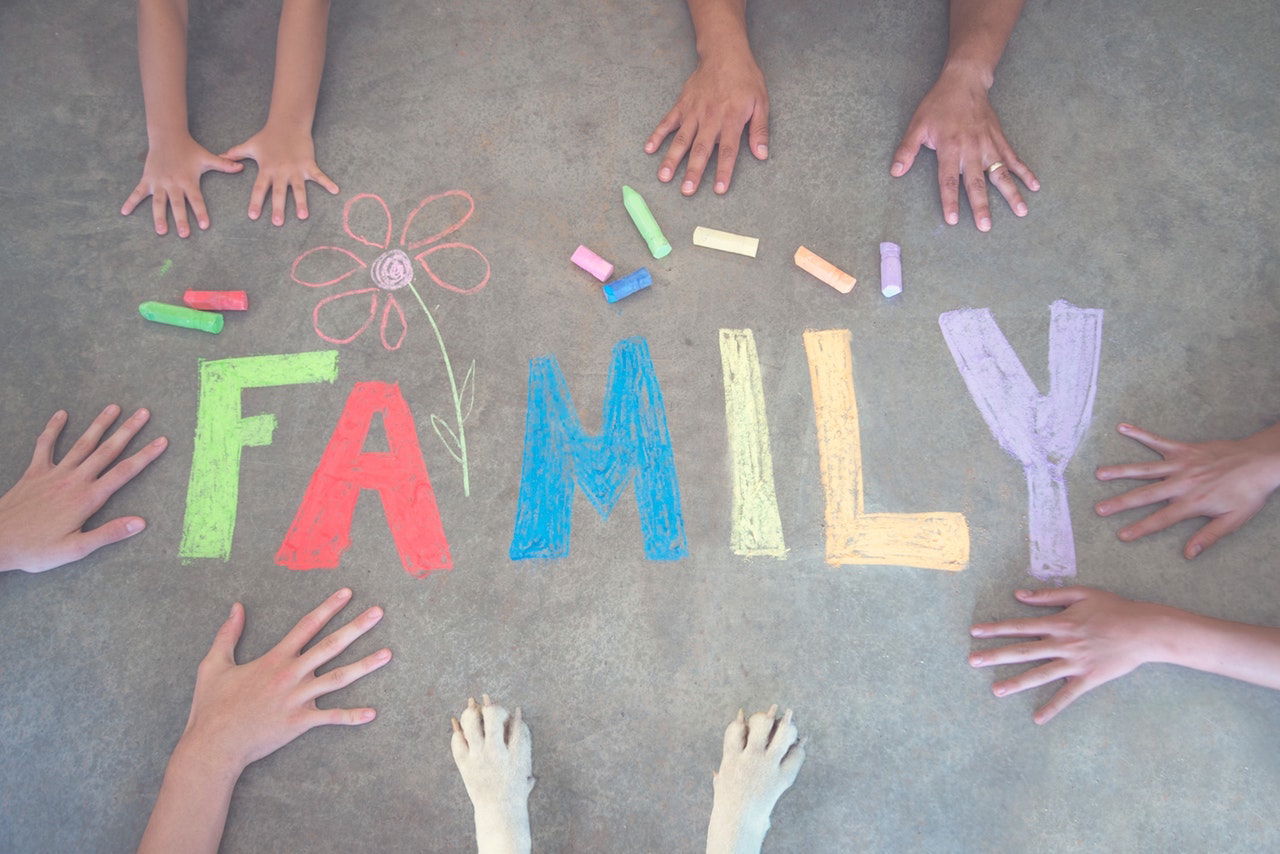Highlights
- Traditional premarital counseling is focused on the couple dyad, or coupleness. But blended family living is about a couple embedded in a family journeying into familyness. Post This
- Kids of all ages (especially adult children) need some input into their future family, the wedding, and how relationships take shape. Post This
- Effective pre-blended family counseling needs to prepare adults and children for the many unique dynamics of stepfamily living that are known to cause family and marital difficulties. Post This
Darryl and Monique shared their frustration with me; it’s a story I’ve heard hundreds of times over the years: “We had premarital counseling with our pastor, but we never discussed anything related to being a stepfamily,” they shared. “And that’s what hit us between the eyes a few months into our marriage. Why didn’t anyone help us know what to do about that before we got married?”
Premarital counseling is nearly ubiquitous within local faith institutions. Helping couples prepare, not just for a wedding, but for life after the wedding is a value most pastors and religious leaders have. Thankfully, premarital preparation works. In general, the average couple sees a 30% increase in relationship quality1 and premarital counseling lowers the annual odds of divorce by 31 percent, per one study.2 That’s good news.
The bad news for couples forming blended families (also called stepcouples) is that 75% get no premarital preparation at all,3 and when they do, typically it is what leaders offer first-time engaged couples, and so it completely misses the mark. This creates a significant premarital counseling gap for couples forming blended families—and means couples start their stepfamily journey without support and protection against re-divorce.
What is needed is an alternative program designed specifically for couples forming stepfamilies that can inform how leaders structure their training and ultimately close that gap.
Key Differences in Premarital Preparation with Couples Forming Stepfamilies
When it comes to blended families, coupleness does not necessarily equal familyness. Traditional premarital counseling is focused on the couple dyad, that is, on coupleness. But blended family living is about a couple embedded in a family journeying into familyness. When blended family couples divorce, it is often because they didn’t know how to become a family. You can immediately see the problem. Premarital preparation that focuses only on the marital dyad inadvertently gives the couple a false sense of security and contributes to the unrealistic expectation that if the couple is strong, the blended family will be strong. That’s just not true.
Research David Olson and I conducted for our book The Smart Stepfamily Marriage found that before marriage couple satisfaction is closely tied to dyadic factors, that is, couple interaction. However, after a blended family wedding, couple satisfaction is increasingly tied to triadic factors, that is, stepfamily dynamics around the couple and, for many families, between homes.
Effective pre-blended family counseling, then, needs to prepare adults and children for the many unique dynamics of stepfamily living that are known to cause family and marital difficulties. Stepcouples and children need designed-for-blended-family preparation, not designed-for-first-marriage preparation.
Blended Family Complexity
I often tell religious leaders that leading and living in a blended family—whether formed by death, divorce, or the dissolution of a relationship—is just as different and complex as leading a church in a socially-politically divisive pandemic.
A little stepfamily math illustrates the point. Biological families are often comprised of two parents and four grandparents. That means there are six primary parent figures directly responsible for childrearing and nurturing children through their lives—all of whom have a direct biological tie to a child who very much wants them in their world. Blended families often have between three and seven parents and stepparents, across three or more households, plus eight or more sets of grandparents, totaling nine to 21 parent figures. Now, keep in mind that many of these people don’t like each other—which, of course, makes parenting far more complicated and difficult—and that on day one, children have strong preferences that some of them remain in their world while they would be fine with or without others.
Stepcouples and children need designed-for-blended-family preparation, not designed-for-first-marriage preparation.
This is but one example of stepfamily complexity that traditional premarital training does not address. There are many others. How does a stepparent connect with minor or adult children who are not open to the stepparent? How does parenting work across multiple homes when the leaders don’t get along, don’t trust each other, or don’t share the same values? How do partners trust their new spouse when their previous one ran off with someone else? And how do both adults and children carry loss from the past into new ambiguous relationships? These are just a few of the many questions traditional premarital counseling does not address, and why it becomes so important to include children in pre-blended family preparation.
In my new book, Preparing to Blend: The Couples Guide to Becoming a Smart Stepfamily,
- couples create a digital genogram of their future family so they can see the complexity and begin to anticipate points of stress;
- couples and children explore how kids might participate (if at all) in the wedding ceremony in order to make it a formative family experience;
- couples identify and recalibrate unrealistic expectations of family bonding;
- couples create a parenting plan together that slowly integrates the stepparent into parenting;
- and the grief process of children is considered with implications for stepparent bonding.
All of this contributes to an overarching family identity while preparing the couple for marriage.
Including the Kids
Premarital counselors who have only worked with couples may feel a little uneasy involving children in sessions or even addressing topics impacting children. Children need to have a voice.
For years I’ve believed that children who feel included in decisions related to forming a blended family and free to speak into the process find embracing the new family easier than children who aren’t, and now there’s evidence of that. Researchers examining the importance of involving children in blended family educational courses concluded, “When it comes to strengthening couples in stepfamilies, the involvement of children is clearly implicated and should not be underestimated.”4 Here’s why. The loss (actually, the series of losses) that children of every age experience leading up to the formation of a stepfamily steals a sense of control and influence over their own lives. Anything a pastor does to give them some voice in what’s about to happen—and how it happens—restores some of that and may shift them from being, yet again, a victim of their circumstances to a contributor to what is being built. Therefore, kids of all ages (especially adult children) need some input into their future family, the wedding, and how relationships take shape. Thus, premarital training must expand to consider and engage the needs of children within the larger family system.
A couple who makes a marital commitment is just the beginning of the blended family journey. Helping them and their children prepare for the rest of that journey should be an objective of effective pre-stepfamily counseling.
Ron Deal is President of Smart Stepfamilies™, directs the blended family ministry at FamilyLife®, and is the author of more than a dozen books and resources, including the bestselling books The Smart Stepfamily and Building Love Together in Blended Families (with Dr. Gary Chapman). Ron is a licensed marriage and family therapist. Learn more at SmartStepfamilies.com.
Editor’s Note: Excerpts from Preparing to Blend and the Preparing to Blend Leader’s Guide by Ron Deal provided by Bethany House Publishers, a division of Baker Publishing Group (Copyright 2021). Used by permission.
1. J. S. Carroll and W. J. Doherty, “Evaluating the effectiveness of premarital prevention programs: A meta-analytic review of outcome research,” Family Relations, 52 (2003): 105–118.
2. S. M. Stanley, P. R. Amato, C. A. Johnson, and H. J. Markman, “Premarital education, marital quality, and marital stability: Findings from a large, random household survey,” Journal of Family Psychology, 20, 1 (2006): 117–26.
3. Ganong, L. & Colman, M. (2004). Stepfamily Relationships: Development, Dynamics, and Interventions. New York: Kluwer Academic, p. 68.
4. Brian Higginbotham, Linda Skogrand, and Eliza Torres, “Stepfamily Education: Perceived Benefits for Children,” Journal of Divorce and Remarriage, 51 (2010): 36–49.














